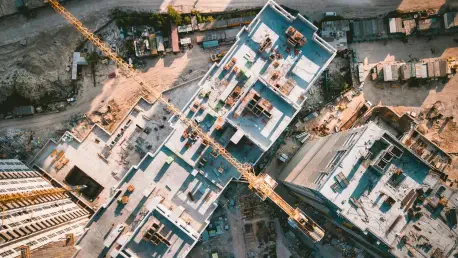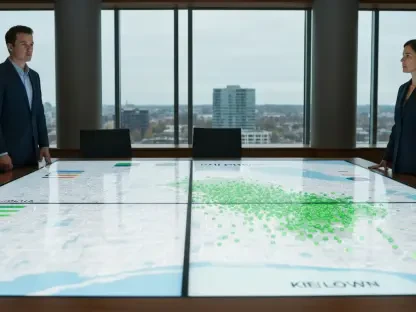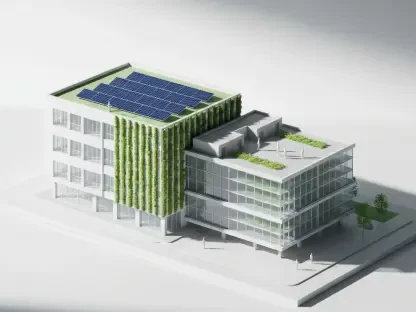In the dynamic landscape of Wilmington, North Carolina, the Mayfaire West development proposal has emerged as a focal point of community discussion, capturing the attention of both residents and stakeholders. Envisioned by developers BrodyCo, the ambitious plan involves transforming a 42-acre parcel into a thriving residential hub featuring nearly 500 living units, encompassing 256 apartments and 223 townhomes and carriage homes. Situated amid existing neighborhoods like Eastwood Village, Parkside, and Windemere, the project aims to meet the increasing demand for housing within the region. However, substantial concerns have been raised by local residents, prompting significant discourse. Issues primarily revolve around potential traffic congestion, environmental impacts, and challenges associated with a predominantly rental housing model.
Local Context and Development Pressure
Positioned strategically adjacent to significant commercial and residential areas, the Mayfaire West development occupies a prime location within Wilmington. It sits near the bustling Mayfaire Town Center, one of the city’s key commercial zones, already placing substantial demands on the local infrastructure. The pressure for new residential developments in this part of New Hanover County is compounded by demographic changes and growing population requirements, making projects like Mayfaire West increasingly prominent. The county has witnessed a surge in housing demand, prompting numerous development initiatives aimed at catering to diverse housing needs. In this context, the Mayfaire West project aligns with a larger trend of urban expansion across the region, appealing to various demographic segments, including young professionals, families, and retirees seeking convenient living arrangements.
This burgeoning demand for housing also underscores the pressing need for thoughtful urban planning and community engagement, as Wilmington grapples with its rapid growth. The Mayfaire West initiative, therefore, not only reflects developers’ aspirations but also encapsulates the broader dynamics of urban development, where regional planning must consistently balance expansion with community welfare. For residents, the potential impact on local services, infrastructure, and neighborhood ambiance remains a primary concern, setting the stage for extensive discussions about the feasibility and desirability of such proposals.
Community Concerns: Traffic Congestion
Traffic congestion emerges as the foremost concern among residents regarding the Mayfaire West development, particularly given the existing conditions along major thoroughfares, including Eastwood Road and Military Cutoff Road. These roads serve as vital arteries for regional movement but are already struggling under the weight of heavy traffic. Projections suggest an increase in congestion, with vehicles on Eastwood Road expected to rise dramatically from their current numbers, while Military Cutoff Road’s traffic load is anticipated to escalate significantly. Such forecasts amplify residents’ apprehensions about the additional stress new developments like Mayfaire West could impose on the transport network.
The developers, BrodyCo, have conducted a Traffic Impact Analysis (TIA) to address these concerns, yet residents remain skeptical of its comprehensiveness and accuracy. Many have questioned whether the TIA adequately accounts for ongoing and upcoming residential projects nearby, such as the 265-unit CenterPoint development, potentially exacerbating congestion. In an attempt to mitigate these concerns, the developers propose the inclusion of five roundabouts within Mayfaire West to enhance traffic flow and safety. However, skepticism persists, as community members like Parkside resident Kerry Newman doubt their effectiveness, fearing these measures might not suffice to alleviate congestion.
Environmental Impact and Flooding Risks
Alongside traffic issues, environmental sustainability and flooding risks feature prominently in the concerns of residents living near the proposed Mayfaire West site. The area is in close proximity to Bradley Creek, an identified high-risk flood zone, amplifying worries about potential increases in flooding due to the new development. Historically, communities such as Eastwood Village have faced vulnerabilities to stormwater runoff, compelling them to advocate for robust measures to address these risks. Patricia Burkes, a resident actively engaged in the discourse, underscores the importance of effective stormwater management strategies to safeguard residential areas from flooding hazards.
BrodyCo has outlined steps to conduct ongoing discussions with the Eastwood Village Homeowners Association, focusing on collaboration over the maintenance of stormwater ponds and drainage ditches. While the proposal currently does not include additional runoff ponds, consideration has been given to incorporating permeable surfaces in parking areas, aiming to improve groundwater infiltration. However, the effectiveness of these initiatives remains subject to debate. Moreover, the concern is not limited to flooding alone; there are fears about disrupting existing habitats for local wildlife species such as deer and foxes, highlighting the ecological dimension of the project. Such ecological considerations call for a nuanced approach to ensure that development and environmental stewardship are not mutually exclusive ambitions.
Build-to-Rent Model Controversy
The build-to-rent model advocated by BrodyCo has emerged as a significant point of contention during community discussions, drawing spirited reactions from residents. This model would see both the townhomes and apartments offered as rental properties—a format some locals view with skepticism. Among the primary apprehensions is the potential for diminished property maintenance and investment, a common concern linked to rental properties compared to owner-occupied residences. Voices like Nick Mitchell’s echo this sentiment, suggesting that renters might lack the long-term commitment necessary for sustained upkeep and community engagement.
BrodyCo President and CEO, Hyman Brody, counters these apprehensions by pointing to trends indicating a shift toward renting among younger demographics, who prioritize flexibility over homeownership. This lifestyle preference is mirrored in broader market dynamics, with an increased prevalence of rental units in Wilmington, exemplified by developments such as The Cottages at Riverlights. These offerings contribute significantly to the local rental market landscape, introducing a diverse array of housing options for demographic segments ranging from young professionals to retirees. Advocates of the rental model assert that it responds effectively to housing shortages while catering to evolving lifestyle needs, thus presenting a compelling case for diversification in housing strategies within the urban setting.
Broader Urban Growth and Planning
The discussions surrounding the Mayfaire West proposal reflect deeper themes in Wilmington’s urban growth narrative, as development progresses to cater to increasing population demands while maintaining community welfare. Residents’ concerns and discussions capture the essence of broader urban planning challenges, highlighting the need for balance between expansion and preservation of neighborhood integrity. The undertaking of such development initiatives illustrates the nuanced dynamics of urban evolution, where developers and communities are co-participants in shaping the region’s growth trajectory.
While traffic and environmental issues remain significant points of contention, BrodyCo’s strategy showcases a commitment to addressing these through infrastructural interventions and sustainable design practices. The inclusion of roundabouts and focus on groundwater management underscore a proactive approach to mitigating adverse impacts. Concurrently, the company’s dedication to a rental-focused housing model aligns with contemporary lifestyle trends, seeking to accommodate varying consumer preferences across Wilmington’s demographic spectrum. Such a model introduces a pertinent aspect into the urban dialogue, underscoring the value of adapting development strategies to harmonize with diverse resident lifestyles and choices.
Rezoning and Future Steps
Mayfaire West, strategically located next to key commercial and residential zones in Wilmington, benefits from its proximity to the bustling Mayfaire Town Center. As one of the city’s major commercial hubs, this area already significantly impacts the local infrastructure. The mounting demands for new housing in New Hanover County are driven by demographic shifts and a growing population, making developments like Mayfaire West more critical. The county is experiencing a surge in housing demand, prompting numerous projects aimed at fulfilling diverse residential needs. Mayfaire West aligns with the broader trend of urban growth in the region, catering to a range of demographics, including young professionals, families, and retirees who seek convenient living options.
The escalating need for housing highlights the importance of careful urban planning and active community involvement, as Wilmington contends with its fast-paced growth. As such, the Mayfaire West initiative embodies developers’ visions and the complex dynamics of urban expansion, where regional planning must balance growth with community well-being. For residents, potential effects on local services, infrastructure, and neighborhood character are key concerns. These factors set the stage for meaningful dialogues on the project’s feasibility and attractiveness, emphasizing the need for thoughtful decision-making as the city expands.









